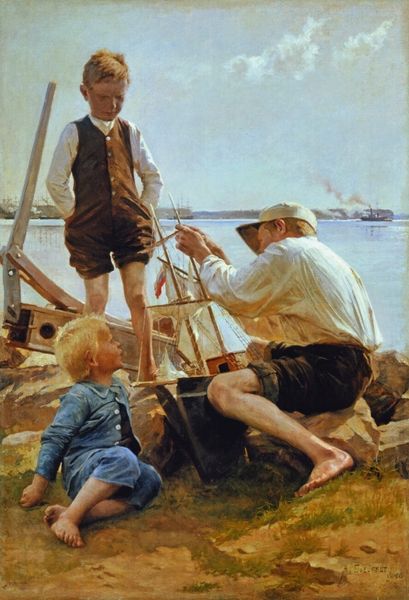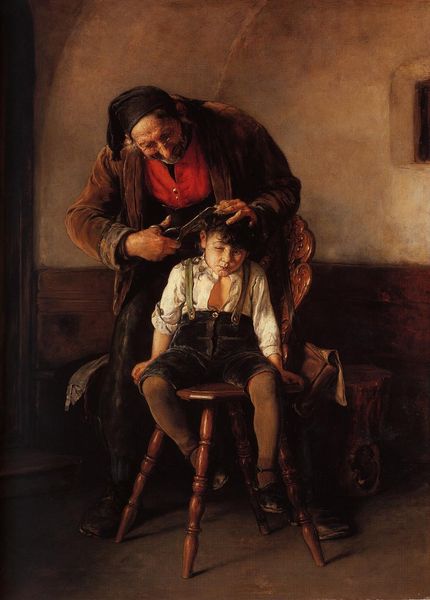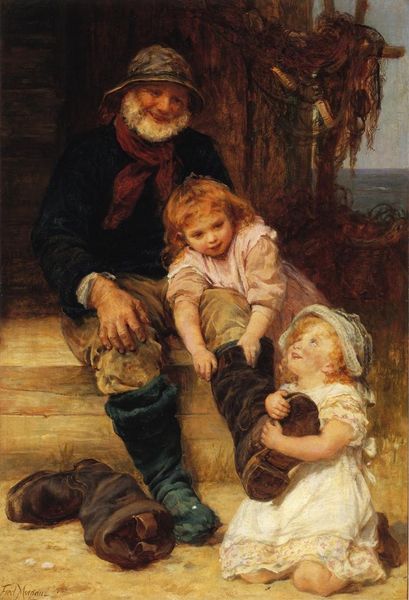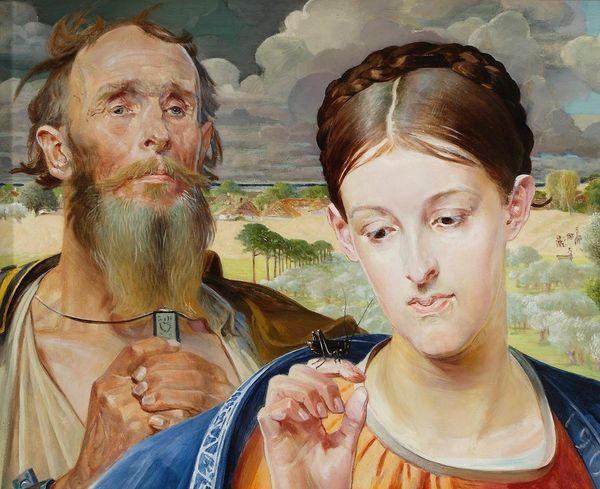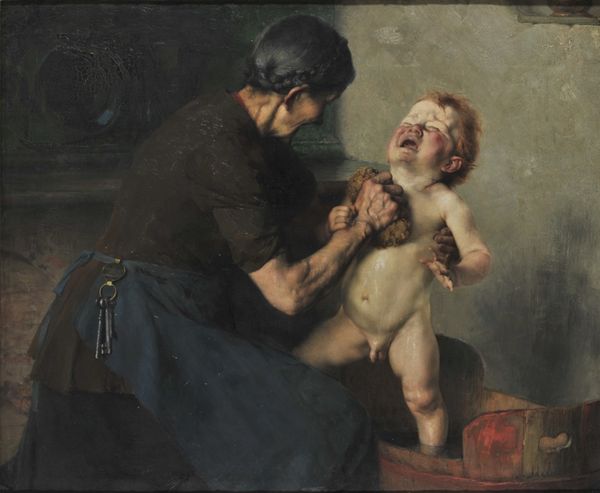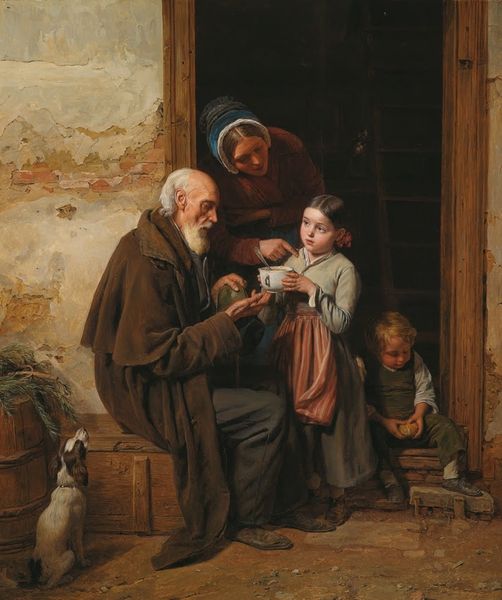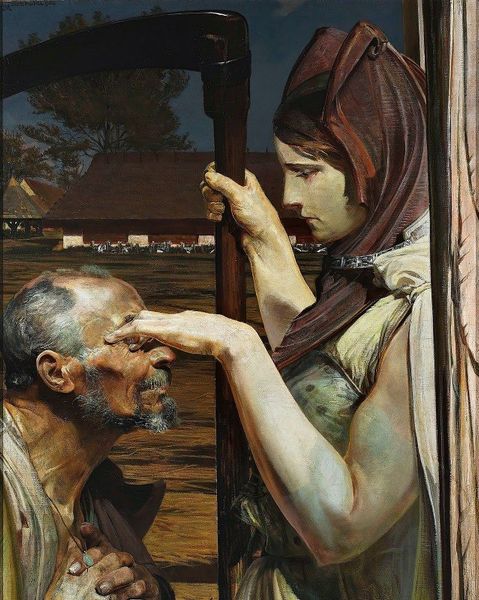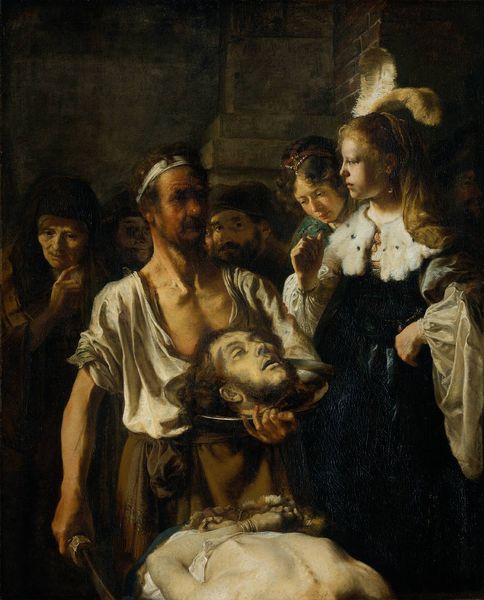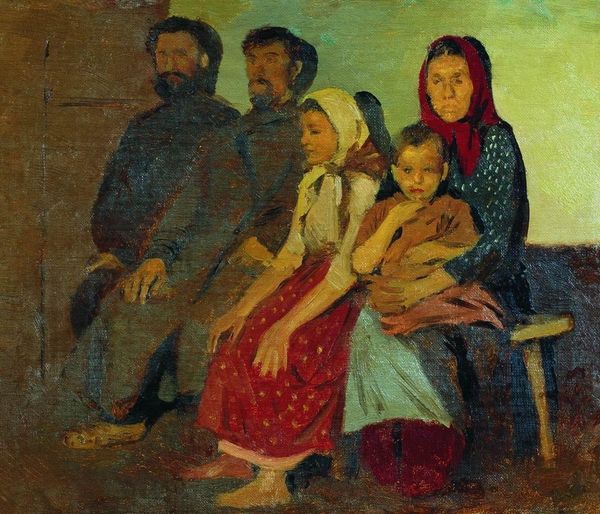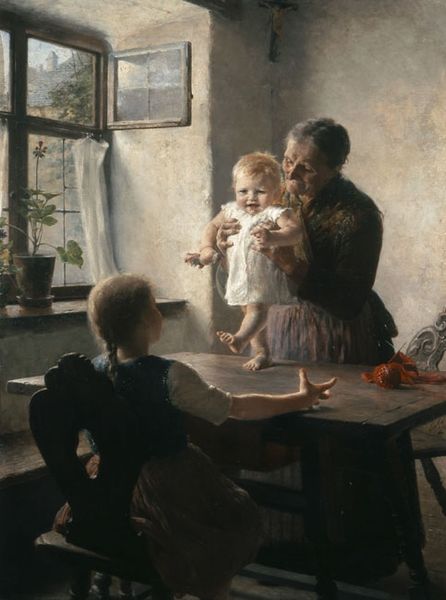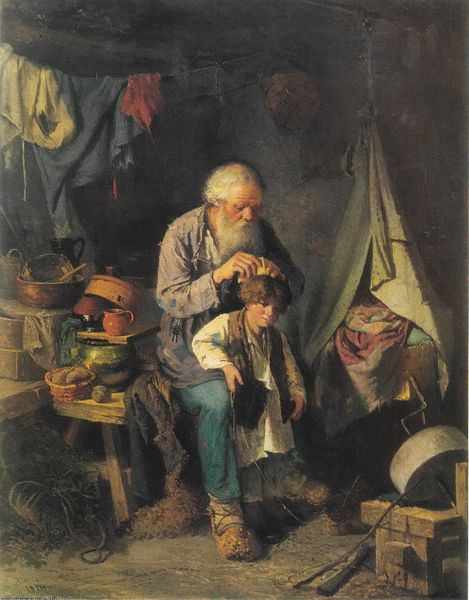
painting, oil-paint
#
portrait
#
painting
#
oil-paint
#
landscape
#
figuration
#
oil painting
#
romanticism
Copyright: Public domain
Curator: We’re now looking at *Poisoned Well III* by Jacek Malczewski. This oil painting presents a fascinating study of figures in a landscape. Editor: It evokes such a melancholy atmosphere, doesn’t it? The overcast sky, the somewhat drab colours... it speaks of something being fundamentally wrong, doesn’t it? There’s an underlying tension I find immediately gripping. Curator: Absolutely. Malczewski, operating within a Romantic and Symbolist framework, often infused his work with potent social and political commentary. If we look at the historical context, the late 19th century in Poland was a time of partition and oppression under foreign powers. Editor: And it's impossible to ignore the figures. We have what looks like a peasant man, and a sorrowful looking girl, perhaps meant to symbolize different social strata, or even Poland itself, alongside the well and the pitcher of water. What could these allude to? Curator: Given Poland's historical trauma and political disenfranchisement, I believe the figures may represent generational burdens but more specifically the idea of inherited guilt or responsibility towards the poisoning. The man’s rough clothing and weathered face hint at enduring hardships. Editor: Yes, and there’s such an acute awareness in Malczewski's presentation. He shows the well and figures frontally, not from the side, forcing the viewer to confront them. The overcast lighting further dramatizes them, imbuing a palpable sense of injustice. The cuffs are an important detail in the image too. What’s the significance here? Curator: The figure being shackled definitely contributes to our reading that the act of well poisoning has not led him to freedom, or a life unbound. Editor: It’s striking how Malczewski masterfully uses symbols and composition to engage the viewer with profound political themes in quite a somber tone. It’s difficult to see this piece outside of its political context. Curator: Precisely. It's a poignant commentary on historical circumstances and collective suffering. Art like this is so critical because it compels us to think critically about the legacies of those histories within the sociopolitical framework that dictates how history remembers figures like these today. Editor: A powerful reminder that even landscapes can bear the weight of human injustice. The artist asks how do we begin to mend the source of what feeds and sustains a community that will also slowly kill it from the inside?
Comments
No comments
Be the first to comment and join the conversation on the ultimate creative platform.
